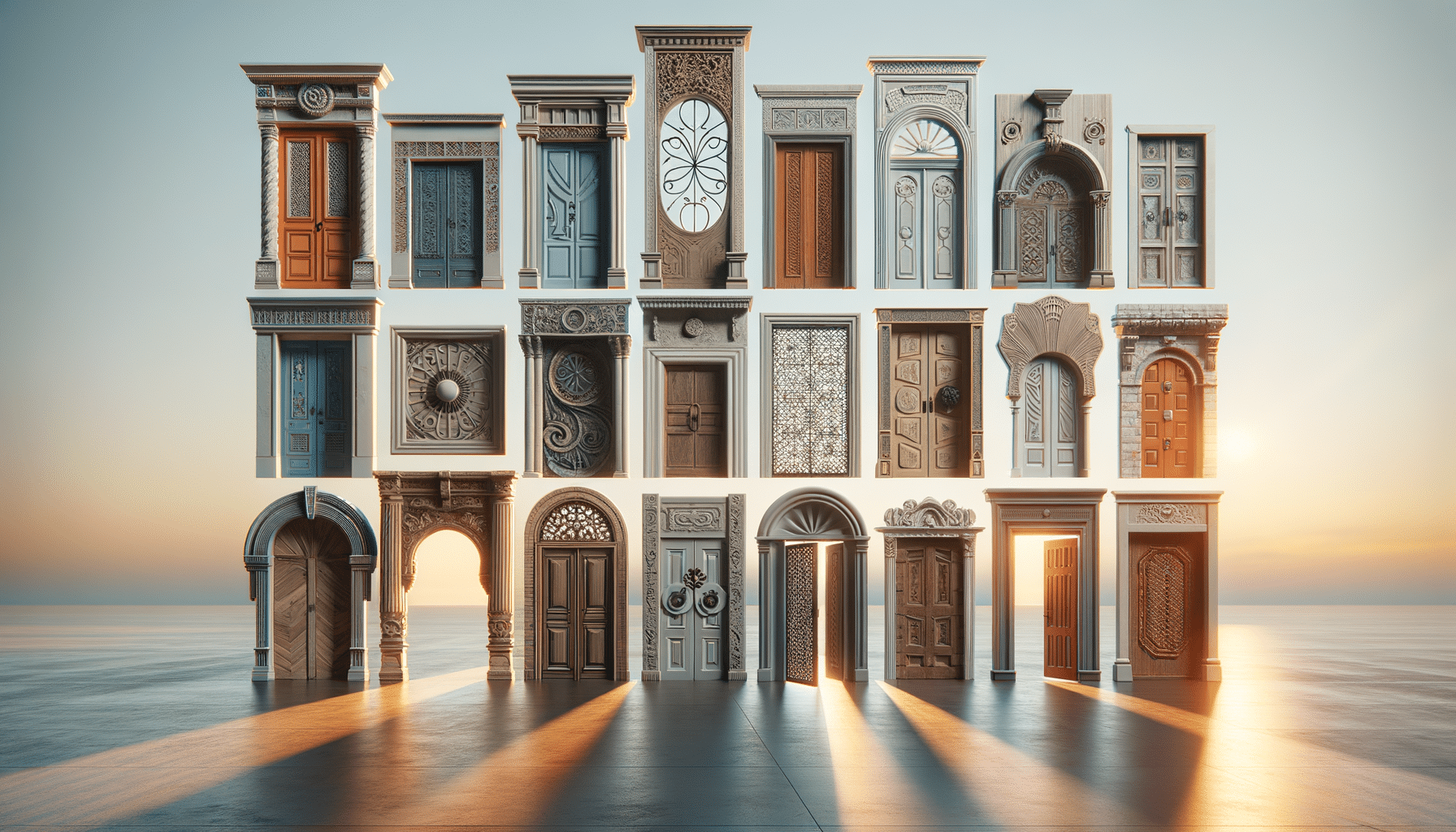
Unraveling the Influence of Doors: A Balance of Aesthetic and Function
The Historical Significance of Doors in Architecture
Doors have held a prominent place in architectural history, symbolizing more than just a passage between spaces. From ancient civilizations to modern edifices, doors have been crafted with meticulous detail and purpose. In ancient Egypt, doors were often adorned with hieroglyphics and intricate carvings, serving as a testament to the craftsmanship and cultural narratives of the time. Similarly, in ancient Rome, doors were not only functional but also served as a status symbol, with grand entrances marking the homes of the wealthy.
As time progressed, doors evolved in design and function, reflecting the architectural styles of their eras. During the Gothic period, doors became more ornate, with pointed arches and elaborate tracery that mirrored the grandeur of cathedrals. The Renaissance brought about a shift towards symmetry and proportion, influencing door designs to become more balanced and harmonious with the surrounding architecture.
In today’s context, doors continue to be a focal point in architectural design, blending historical influences with contemporary aesthetics. They are designed to complement the overall style of a building, whether it be minimalist, traditional, or avant-garde. The historical journey of doors highlights their enduring significance as both functional elements and artistic expressions within architecture.
Doors as Symbols of Personal Expression
Beyond their architectural significance, doors serve as powerful symbols of personal expression. The choice of a door can reflect the personality, taste, and values of the inhabitants. A brightly colored door might suggest a vibrant and welcoming home, while a solid, unadorned door could convey a sense of privacy and security.
Homeowners often use doors as a canvas to express individuality, choosing materials, colors, and designs that resonate with their personal style. Wooden doors, for instance, offer a classic and timeless appeal, while glass doors provide a modern and open feel. The use of unique hardware, such as handles and knockers, further personalizes the entrance, adding character and charm.
Moreover, doors can be customized to reflect cultural or regional identities. In some cultures, specific colors or motifs hold symbolic meanings, such as red doors in Chinese culture, which are believed to bring good luck and prosperity. This cultural aspect of door design adds another layer of personal expression, allowing individuals to connect with their heritage and traditions.
In essence, doors are more than just functional elements; they are an extension of personal identity and a means of artistic expression, offering a glimpse into the lives and personalities of those who reside behind them.
The Role of Doors in Modern Architecture
In modern architecture, doors play a crucial role in both functionality and aesthetics. As buildings become more innovative and environmentally conscious, doors are designed to meet new standards of energy efficiency and sustainability. Modern doors often incorporate advanced materials and technologies, such as insulated panels and smart locking systems, to enhance their performance and security.
Architects and designers are increasingly using doors as integral elements of a building’s façade, creating seamless transitions between indoor and outdoor spaces. Large sliding or folding glass doors, for example, are popular in contemporary designs, offering expansive views and natural light while maintaining a connection with the exterior environment.
Additionally, the trend towards open-plan living has influenced door design, with many homes opting for minimalistic or concealed doorways that blend into the walls. This approach not only maximizes space but also creates a clean and uncluttered aesthetic, aligning with modern design principles.
In summary, doors in modern architecture are not just about functionality; they are key components in creating visually appealing and sustainable spaces. They reflect the evolving needs and preferences of society, balancing practicality with innovative design.
Technological Advancements in Door Design
The integration of technology into door design has transformed the way we perceive and interact with these everyday elements. Smart doors, equipped with electronic locks and sensors, offer enhanced security and convenience. Homeowners can now control access remotely, receive alerts, and even integrate doors with other smart home systems for a cohesive living experience.
Materials used in door construction have also seen significant advancements. Composite materials, which combine the strength of wood with the durability of synthetic elements, provide doors that are both aesthetically pleasing and long-lasting. These materials are often resistant to weathering, reducing maintenance needs and extending the lifespan of the doors.
Furthermore, advancements in manufacturing techniques have allowed for greater customization and precision in door design. CNC machining and 3D printing enable intricate patterns and designs to be produced with ease, offering endless possibilities for creativity and personalization.
These technological advancements not only enhance the functionality and durability of doors but also expand the potential for innovative design, allowing architects and homeowners to push the boundaries of what is possible in door aesthetics and performance.
The Psychological Impact of Doors
Doors have a profound psychological impact, influencing our perceptions and emotions as we move through spaces. The design and placement of doors can affect how we experience a building, guiding our movements and shaping our interactions with the environment.
For instance, a grand entrance with a large, imposing door can evoke feelings of awe and importance, setting the tone for the space beyond. Conversely, a small, understated door might create a sense of intimacy and coziness, inviting us to explore further.
The color and material of a door also play a role in our psychological response. Warm, natural materials like wood can create a welcoming and comforting atmosphere, while sleek, metallic finishes might convey a sense of modernity and sophistication.
Moreover, doors can serve as psychological barriers, providing a sense of privacy and security. The act of closing a door behind us can create a boundary between public and private spaces, offering a moment of solitude and reflection.
In conclusion, doors are not just physical structures; they are powerful psychological tools that influence our emotions and behaviors, shaping our experiences within architectural spaces.

